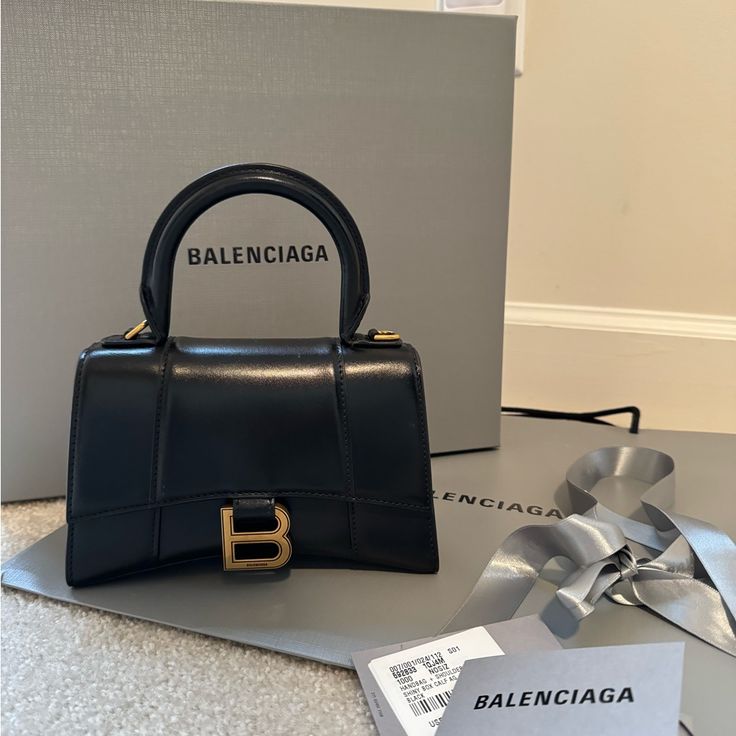Balenciaga, a fashion house with a storied past, has undergone a remarkable transformation since its founding by Cristóbal Balenciaga in 1919. While initially celebrated for its revolutionary haute couture silhouettes, the brand’s modern identity, particularly under recent creative directors, has been significantly shaped by its innovative and often provocative handbags. The evolution of the Balenciaga bag reflects not only shifts in fashion trends but also the brand’s continuous reinvention, from the rebellious “Motorcycle” era to today’s sculptural and sometimes controversial designs.
The Birth of an Icon: The Motorcycle City Bag (Early 2000s)
The true turning point for Balenciaga’s handbag legacy arrived in the early 2000s under then-creative director Nicolas Ghesquière. His “Motorcycle Lariat” bag, later affectionately known as the “City” bag, was initially rejected by management for being “too light, too soft, and lacking structure” – a stark contrast to the era’s prevalent rigid, logo-heavy luxury bags.
However, Ghesquière’s persistence led to 25 prototypes being produced and distributed to fashion insiders like Kate Moss. Moss’s embrace of the bag, with its distressed, supple lambskin, chunky hardware, and signature long leather tassels, sparked a cult following. The City bag’s “undone” aesthetic, lack of overt branding, and lived-in appeal resonated deeply with the “It-girl” culture of the early 2000s. It became a symbol of effortless cool, seen everywhere from red carpets to casual outings, proving that luxury could be both edgy and practical. This bag’s success firmly established Balenciaga’s presence in the accessories market.
Ghesquière’s Legacy and Diversification (Mid-2000s to Early 2010s)
Following the immense success of the City, Ghesquière continued to expand the “Motorcycle” family, introducing variations like “The First” (smaller), “The Work” (larger), “The Part Time,” “The Twiggy,” and the “Mini Pom Pom.” These bags retained the signature hardware and slouchy silhouette but offered different sizes and proportions to cater to diverse needs. Balenciaga also began to introduce a wider array of colors beyond the initial black and brown, becoming known for its vibrant seasonal palettes. During this period, the brand’s bags became synonymous with a certain “indie sleaze” aesthetic, loved for their ability to look even better with age and wear.
The Alexander Wang Interlude (2012-2015)
When Alexander Wang took the creative helm, he brought a more minimalist and sleek sensibility to Balenciaga. While respecting the brand’s heritage, his bag designs often featured cleaner lines and more refined hardware, moving away slightly from the raw, distressed look of the Ghesquière era. Though his tenure was brief, it marked a period of subtle refinement before the brand’s next major shift.
The Demna Era: Reinvention and Provocation (2015-Present)
Under Demna Gvasalia, balenciaga bag has undergone its most radical transformation, evolving into a brand known for its avant-garde, streetwear-infused, and often polarizing aesthetic. This shift profoundly impacted the bag collections:
- The Hourglass: Introduced in Fall/Winter 2019, the Hourglass bag quickly became a new icon. Its distinctive curved, structured silhouette, inspired by Cristóbal Balenciaga’s couture tailoring, offers a sleek, modern, and instantly recognizable shape. It represents a return to sculptural forms but with a contemporary edge.
- Le Cagole: Launched in 2021, Le Cagole is a direct homage to the early 2000s Motorcycle bags but reinterpreted with a more exaggerated, studded, and often deconstructed aesthetic. Its edgy, Y2K-inspired look, complete with heart-shaped mirrors and braided details, quickly captured the attention of a new generation of luxury consumers.
- The “Le City” Reissue (2024): In a significant nod to its own history and the ongoing Y2K resurgence, Balenciaga reissued the original City bag as “Le City” in 2024. This version is a faithful recreation, celebrating the bag’s cultural legacy and its enduring appeal, often featured in campaigns that cleverly repurpose archival paparazzi imagery.
- Conceptual and Statement Bags: Demna’s tenure has also seen the introduction of highly conceptual and often controversial bags, pushing boundaries with unconventional materials, oversized proportions, and playful, ironic designs that challenge traditional notions of luxury.
The evolution of the Balenciaga bag is a dynamic narrative of adaptation, innovation, and cultural relevance. From the accidental icon of the City bag to the sculptural elegance of the Hourglass and the provocative statements of Demna’s vision, Balenciaga continues to redefine what a luxury handbag can be.

